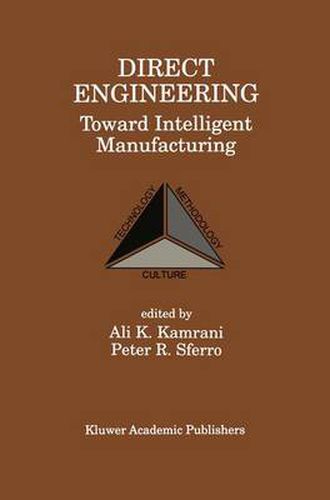Readings Newsletter
Become a Readings Member to make your shopping experience even easier.
Sign in or sign up for free!
You’re not far away from qualifying for FREE standard shipping within Australia
You’ve qualified for FREE standard shipping within Australia
The cart is loading…






This title is printed to order. This book may have been self-published. If so, we cannot guarantee the quality of the content. In the main most books will have gone through the editing process however some may not. We therefore suggest that you be aware of this before ordering this book. If in doubt check either the author or publisher’s details as we are unable to accept any returns unless they are faulty. Please contact us if you have any questions.
Direct engineering (DE) is the creation of a product development cycle into a single, unified process. The design process in most industries is an evolutionary one (that is, incremental changes to some existing design). DE is a manufacturing process that seeks to improve the design processes by providing complete archival documentation of existing designs. It uses three-dimensional geometric models with integrated manufacturing information throughout the design process. DE reduces the design cycle, and the variety and number of engineering changes. This process decreases the design cycle time, increases productivity, and provides a higher quality product. The required technologies and methodologies that will support the development of the DE environment are: (1) product representation using feature-based modelling; (2) knowledge-based applications that will support the entire product development cycle; (3) an engineering environment implemented around distributed computing and object-oriented systems; (4) and direct manufacturing techniques using rapid prototyping. This text addresses the following topics related to the development, implementation, and integration of the DE environment: (1) the current scope of the research in intelligent manufacturing; (2) the results of the technologies and tools developed for integrated product and process designs, and (3) examination of the methodologies and algorithms used for the implementation of direct engineering.
$9.00 standard shipping within Australia
FREE standard shipping within Australia for orders over $100.00
Express & International shipping calculated at checkout
This title is printed to order. This book may have been self-published. If so, we cannot guarantee the quality of the content. In the main most books will have gone through the editing process however some may not. We therefore suggest that you be aware of this before ordering this book. If in doubt check either the author or publisher’s details as we are unable to accept any returns unless they are faulty. Please contact us if you have any questions.
Direct engineering (DE) is the creation of a product development cycle into a single, unified process. The design process in most industries is an evolutionary one (that is, incremental changes to some existing design). DE is a manufacturing process that seeks to improve the design processes by providing complete archival documentation of existing designs. It uses three-dimensional geometric models with integrated manufacturing information throughout the design process. DE reduces the design cycle, and the variety and number of engineering changes. This process decreases the design cycle time, increases productivity, and provides a higher quality product. The required technologies and methodologies that will support the development of the DE environment are: (1) product representation using feature-based modelling; (2) knowledge-based applications that will support the entire product development cycle; (3) an engineering environment implemented around distributed computing and object-oriented systems; (4) and direct manufacturing techniques using rapid prototyping. This text addresses the following topics related to the development, implementation, and integration of the DE environment: (1) the current scope of the research in intelligent manufacturing; (2) the results of the technologies and tools developed for integrated product and process designs, and (3) examination of the methodologies and algorithms used for the implementation of direct engineering.